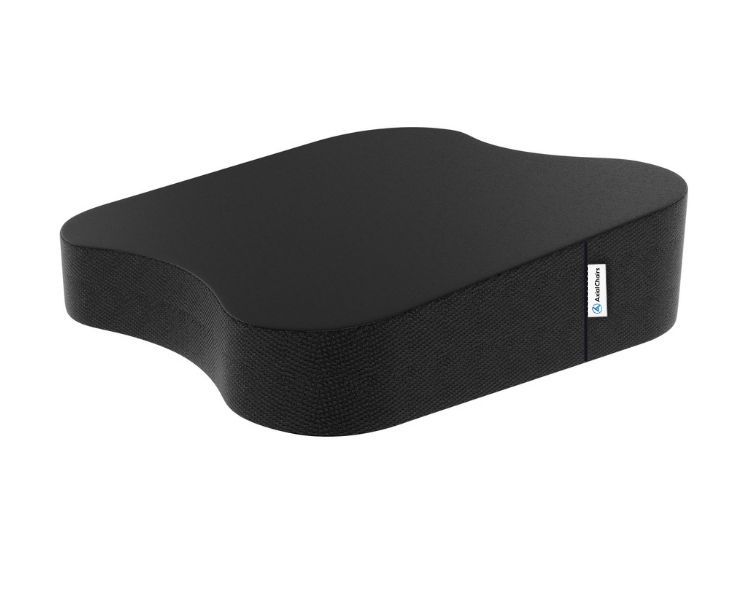Do you experience pain in your lower back or hips that just won’t go away? What if we told you it could be caused by something as simple as the SI joint – a small but powerful structure at the base of the spine. Especially since this area is so close to our centre of gravity and is used with almost every movement, even non strenuous activities can cause serious discomfort. Let’s get it out on the table: let’s talk about what causes SI joint pain, how to know if your issue stems from that fragile connection, and some tips for taking care of everyday aches and pains.
As a general rule, when a sacroiliac (SI) joint pain is characterized by tenderness to touch around the low back region, buttocks, and groin, the common causes for this is are arthritis, injury, pregnancy, or faulty posture. Symptoms include limping, sciatica-like pain, decreased range of motion, muscle spasms, and localized pain.
If you suffer from SI joint pain, you shoulder consider my advice in this blog post. With over 30 years of experience as a chiropractor and ergonomist, I’ve authored a book on posture, spoken on national TV, and engineered creative solutions for comfortable sitting. My latest project, a range of ergonomic seat cushions, was successfully funded through Kickstarter. Allow me to share my expertise and recommend some great options to alleviate your sacroiliac pain.
SI Joint Pain: The Basics
First, let’s quickly recap what the SI joint is. The sacroiliac (SI) joint connects the sacrum, the triangular bone at the base of the spine, to the ilium of the pelvis. This joint acts as a shock absorber for the spine and helps with transferring weight and forces between the upper body and the lower body. When it becomes inflamed or misaligned, it can cause pain and discomfort.
Now, let’s get down to the nitty-gritty. One of the key factors in preventing and alleviating SI joint pain is maintaining proper spinal alignment and a strong core. I always tell my patients that a healthy spine is a happy spine, and this definitely holds true for the SI joint.
Sitting in Alignment
When it comes to sitting, especially for long periods, it’s crucial to find a chair that supports your spine and encourages proper alignment. But, even with the perfect chair, you may still experience discomfort in your knees or other parts of your body. That’s where an expert-designed ergonomic seat cushion comes into play.
I always advise using a seat cushion made with a natural latex top and a high-density base layer foam. The latex provides the perfect balance of softness and support, while the high-density foam ensures that your cushion won’t flatten over time. This combination helps to evenly distribute your body weight and alleviate pressure points, making sitting much more comfortable.
I’m sure you’ve seen memory foam cushions on the market, but I never recommend them for my patients. In my opinion, memory foam lacks pressure support and resilience, which can lead to discomfort over time. Additionally, memory foam is a toxic material that tends to get hot when you sit on it for long periods – not exactly what you want when you’re trying to stay comfortable!
All Day Comfort & Support
So, the next time you’re struggling with SI joint pain to touch, remember these tips:
- Focus on maintaining proper spinal alignment and a strong core.
- Invest in an expert-designed ergonomic seat cushion made with a natural latex top and a high-density base layer foam.
- My opinion is that you should avoid memory foam cushions, as they lack pressure support and resilience, and can be toxic and uncomfortably warm.
Crafting a Supportive Chair: Advice and Suggestions
To optimize your seating comfort, it’s important to consider various factors, with chair customization being a primary consideration. Different strategies can be employed to achieve this, such as introducing an ergonomic seat pad and back support. These improvements can alleviate stress on your back and legs, enhancing comfort and posture during extended periods of sitting. Moreover, ensure your feet are securely on the ground and that there’s sufficient space between your chair and desk. By following these pointers, any conventional hard chair can be converted into an ergonomic retreat that bolsters long-term health and well-being.
Ergonomic Sitting Accessory
An ergonomic seat wedge (illustrated above) can be deployed to correctly position your spine and boost stability. This premium natural latex cushion assists in reinforcing core muscles while reducing tension in other areas, such as the shoulders and neck. Furthermore, maintaining an upright posture is less demanding on your hips and knees, as it activates more muscle groups simultaneously compared to leaning on a cushioned surface. This erect posture deters strain-inducing habits that people may inadvertently develop while working.
I explain the concept of my ergonomic design on a TV show HERE
Understanding Sacroiliac Joint Pain
I know how you feel. Dealing with sacroiliac joint pain can be a frustrating and debilitating experience. As a chiropractor, I’ve had many patients come to me, seeking relief from this type of pain. In my clinical experience, I’ve found that one of the main causes of sacroiliac joint pain is misalignment in the spine and an imbalanced or weak core.
I’ve written a complete hands-on review about the best sitting position for sciatica, and here is what I tested best with my sciatica patients.
The Importance of Spinal Alignment and a Strong Core
You might be wondering how spinal alignment and a strong core can affect your sacroiliac joint pain. Well, when your spine is properly aligned, it allows for a more even distribution of weight and pressure on your joints, including the sacroiliac joint. Additionally, a balanced and strong core can help support your spine, reducing strain on the sacroiliac joint and other areas of your body.
One of the primary ways to maintain proper spinal alignment and a strong core is by being mindful of your posture while sitting. This is especially important if you’re experiencing pain in your knees as well, which can also be caused by poor posture and misalignment.
Best Seat Cushion for SI Joint ReliefAxial Ergonomic Seat Cushion® | Seat Chair Wedge
Quick Guide: A 30-Second Summary

All Day Comfort & Support
Product Name
Axial Designs™ Seat Cushion
Price
$149
Warranty
1 Year
Type
Posture Wedge
Top Layer
100% Natural Latex (Molded)
Bottom Layer
High-Density Foam
Top Material
Isometric Grippy Vegan Leather
Bottom Material
Non-Slip Material
Side Material
3D Breathable Fabric
The Power of Ergonomic Seat Cushions
To help support proper posture and spinal alignment while sitting, I always advise using an expert-designed ergonomic seat cushion. These cushions can provide essential support for your spine and help alleviate pressure on your sacroiliac joint and knees. Look for one made with a natural latex top and a high-density base layer foam for optimal support and comfort.
(BTW, I never recommend memory foam cushions, as they lack pressure support and resilience. Plus, they can be a toxic material that gets hot when you sit on it for long periods.)
Self-Treatment and Precautions for Sacroiliac Joint Pain
When dealing with sacroiliac joint pain, there are some steps you can take on your own to help relieve discomfort. However, always consult with a healthcare professional before trying any new treatments or exercises.
- Unlocking the SI joint: There are some gentle stretches and exercises you can do at home to help unlock your SI joint. These movements aim to increase mobility and relieve pain, but be sure to go slowly and listen to your body.
- Where SI joint pain is felt: SI joint pain is typically felt in the lower back and buttocks. It can also radiate to the hip, groin, or thigh. Becoming aware of where your pain is located can help you target your stretches and exercises more effectively.
- SI joint pain exercises to avoid: While some exercises can help alleviate SI joint pain, there are others you should avoid. High-impact activities, heavy lifting, or twisting exercises can exacerbate your discomfort. Instead, focus on low-impact exercises and gentle stretching.
- Sitting with SI joint pain: Adjusting your sitting posture can help reduce pain in your SI joint. Try to sit with your feet flat on the floor and your knees bent at a greater than 90-degree angle. Use an ergonomic seat cushion (above) to provide added support and promote proper alignment.
Remember, it’s crucial to consult with a healthcare professional to develop a personalized treatment plan for your sacroiliac joint pain. Following their advice and incorporating these tips can help you find relief and improve your overall quality of life.
Understanding Sacroiliitis and Sacroiliac Joint Dysfunction: The Connection to Low Back Pain
I know how you feel when it comes to sacroiliac joint pain. It’s a common issue that many people face, and it can be quite frustrating. From my clinical experience, I’ve found that sacroiliitis and sacroiliac joint dysfunction are two common causes of this pain. Sacroiliitis refers to inflammation in the sacroiliac joint, which connects the sacrum to the pelvis. Sacroiliac joint dysfunction, on the other hand, occurs when there’s abnormal movement or misalignment in the joint. Both of these conditions can lead to low back pain, affecting your ability to sit comfortably.
Osteoarthritis and Joint Problems in the Sacroiliac Region: Unraveling the Complexities with NLP
Osteoarthritis and joint problems in the sacroiliac region present a challenging and complex area of study for medical professionals. As the largest joint in the axial skeleton, the sacroiliac joint plays a crucial role in the stability and flexibility of the human body. Consequently, the accurate diagnosis and treatment of issues in this region are essential for maintaining overall health and well-being.
By employing natural language processing (NLP) techniques, researchers and healthcare providers can better understand and interpret vast amounts of unstructured medical data, such as patient records, imaging reports, and research publications. This can lead to a more nuanced and informed approach to sacroiliac joint disorders, enabling the development of targeted therapies and personalized treatment plans. Furthermore, the integration of NLP in healthcare systems can enhance decision-making processes and facilitate interdisciplinary communication, ultimately improving patient outcomes in the management of osteoarthritis and related joint problems.
All Day Comfort & Support
Exploring Sacroiliac Joint Anatomy, Joint Fusion Techniques, and NLP Applications for Pain Relief
Osteoarthritis and joint problems in the sacroiliac region can significantly impact an individual’s quality of life, as they may cause chronic pain and reduced mobility. The sacroiliac joint, which connects the sacrum and ilium bones in the pelvis, plays a crucial role in transmitting forces from the spine to the lower limbs. As the joint experiences wear and tear, osteoarthritis may develop, leading to inflammation, pain, and stiffness.
Joint fusion techniques, such as minimally invasive sacroiliac joint fusion surgery, offer a promising solution for patients who fail to find relief through conservative treatments. In recent years, the application of Natural Language Processing (NLP) techniques in pain relief has emerged as a complementary approach, utilizing machine learning algorithms to analyze and understand patients’ subjective experiences of pain. By fostering personalized pain management strategies and enhancing communication between patients and healthcare providers, NLP applications hold potential for improving the overall treatment experience for those suffering from sacroiliac joint problems.
Summary
SI joint pain is a very real and discouraging condition that many struggle with. While it can be hard to deal with, there are ways to manage and cope with it. Learning more about the SI joint, what causes pain, and various treatments allows you to find the best option for you. Also, don’t forget that both stretching and strengthening can help tremendously as well. Though this has been a difficult process for some of us, understanding how to address SI joint pain is key for living without pain or discomfort.
Remember that even if there is still pain at times, knowing steps to take in order to control it brings relief. There are always others facing similar struggles so just know – you are not alone! Lastly, I would like to leave you with a reminder – be gentle with your body during this process and give yourself the time needed to rest and heal. Reach out if necessary, but also trust yourself along the way. Your journey towards finding peace will pay off!
Sources:
- Bovonratwet, P., Shen, T.S., Islam, W., Ast, M.P., Haas, S.B. and Su, E.P., 2021. Natural language processing of patient-experience comments after primary total knee arthroplasty. The Journal of Arthroplasty, 36(3), pp.927-934.
- Ledonio, C.G., Polly, D.W. and Swiontkowski, M.F., 2014. Minimally invasive versus open sacroiliac joint fusion: are they similarly safe and effective?. Clinical Orthopaedics and Related Research®, 472, pp.1831-1838.







